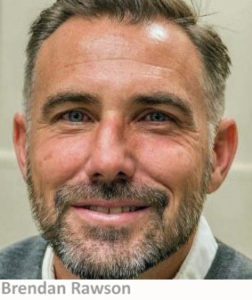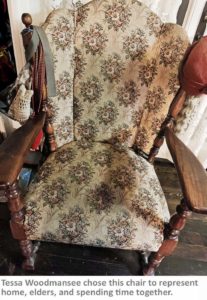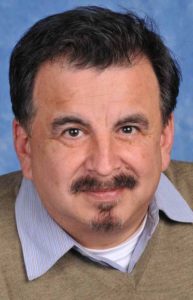By James Rojas, February 12, 2021
Planners often focus their visioning efforts on how infrastructure looks, and rarely ask how a place feels to participants. For many people, how a place feels is as real as brick and mortar. Artists, in particular, bring a heightened level of awareness to their surroundings. However, there are few planning tools to articulate their awareness and experiences with places.
So I was not surprised when Brendan Rawson, Executive Director at San Jose Jazz (SJZ), approached me to facilitate two workshops: First a San Jose Jazz Retreat with board and staff members that involved building memories of sound. The second was part of the public engagement process for the Diridon Station Area planning, which includes one of the largest train stations in California and Google’s proposed Downtown West project.  The City of San Jose’s Diridon Program Manager Lori Parks Severino enlisted local community groups to help them develop nuanced approaches to engagement and bring more voices into the conversations, and San Jose Jazz was one of the grant recipients. The focus of this workshop was on public space.
The City of San Jose’s Diridon Program Manager Lori Parks Severino enlisted local community groups to help them develop nuanced approaches to engagement and bring more voices into the conversations, and San Jose Jazz was one of the grant recipients. The focus of this workshop was on public space.
Since I use an art-based tool that helps participants articulate how a space feels — through objects, memories, and their senses — Brendan thought this approach would reflect the mission of his organization, which celebrates jazz as a dynamic, evolving art form.
Build your first memory of sound
At a retreat hosted by San Jose Jazz at the San Jose Mexican Heritage Plaza this past October, I facilitated a hands-on but virtual workshop with board and staff members to explore the role of sound in their lives. The participants — many of them musicians — were asked to take 10 minutes and use everyday objects to build dioramas representing their first memory of sound, then present their sound memories to the group.
Sounds from nature — water flowing, for example — were the most common in many memories. Other sounds signaled activities (e.g., children playing) or defined places, such as city versus rural. Sounds also reinforced social bonds or relationships (siblings fighting) and the making of music (e.g., a church choir).
These sounds helped the participants forge relationships with places and people (belong) at an early age.
Build your ideal public space
The Diridon Station Area Open Space Workshop (Hosted by San Jose Jazz with City of San José support) was held on December 10th. It gave us a perfect opportunity to experiment with innovative creative engagement tools to connect people to the planning process and influence the outcomes. For San Jose Jazz, public space provides critical inspiration to musicians to produce music and opportunities for the public to listen to it. The workshop gave their organization and community a voice at the table and allowed them to explore their role in shaping the dialogue for public space with musicians, other artists, and community members in general.
This workshop was originally planned to be face-to-face. But due to shelter-in-place orders, we developed a hands-on, virtual workshop to educate, connect, and provide a creative way for a segment of the San Jose community to engage with the planning process. The online workshop consisted of two tasks:
Part 1: Build your favorite childhood memory
Participants were asked to take 10 minutes to build a diorama of their memory. They searched their room for objects that would help evoke it. They then wrote their memories in the chat stream and emailed photos of their work to the breakout room facilitators.
 Each person then presented his or her memory to the group, with most presenting the objects that had triggered their memories. The memories fell into three categories:
Each person then presented his or her memory to the group, with most presenting the objects that had triggered their memories. The memories fell into three categories:
- Social: Family, friends, and community.
- Feelings: Safe, warm, happy, taking ownership of space, historic, and exploration.
- Places: Outdoors, nature, beaches, and parks.
Everyone participated in the activity. Interestingly, most childhood memories took place outdoors, regardless of where people grew up.
- Participants’ objects varied. Some were common; others were unique. All were part of their daily lives.
- Participants spoke with strong conviction about their experiences. Their memories evoked sensory experiences of nature, physical activity, and social cohesion — many of which took place in San Jose and the surrounding area.
- Their heartfelt childhood memories expressed deep attachment to people, places, and activities, echoing the importance of public open space.
- The participants explored how cities are the sums of their experiences, setting a congenial tone for the next task.
Part 2: Build your public space
Using everyday objects again, participants were asked to build a diorama representing the sensory experiences of their ideal public space. They then wrote descriptions of their model in the chat stream and emailed a photo to the facilitator. Each person then presented his or her ideal public space in the breakout rooms.
The common themes, values, emotions, and ideal spaces that came out of this activity were art, urban design, history/belonging, nature, variety of uses, intergenerational, and civic pride.
The participants stated various ways public space could enrich the lives of San Jose residents and visitors alike. By incorporating nature, history, art, and activities, public space can be interdisciplinary and enduring, embracing the city’s diversity.
The event ended with a discussion of how their reflections on public space experiences and feelings could help inform planning for the Diridon Station Area.
The value of the process
Online engagement presents challenges in terms of meaningful exchanges and community building. It also has its opportunities, which we learned through the Diridon virtual workshop. First, participants were more than happy to connect virtually. The process created a temporary community of inquiry to explore the meaning, value, and feel of public space from the comfort of the participants’ work or living spaces. The interactive nature of the process helped participants form a deeper connection with each other beyond what a “presentation followed by Q&A” meeting would generate. Staff also participated on a level with community members. That connection helped people open up to reach new depths of insight to inform the planning process.
One of the challenging tasks for workshop facilitators (virtual or in-person) is capturing and translating what was said and what was not. People use metaphors to represent ideas and feelings. The participants came up with public space ideas, solutions, and feelings based on their lived San Jose experiences. They focused on their landscape, issues, and possibilities. They expressed that public space is a critical part of their lives and should be in this project as well, tied as they are — physically, mentally, and emotionally — to place. The participants had a positive experience with community engagement, building a deeper connection with the project team and strengthening their ownership in the process and the outcomes.
Brendan’s takeaway was that workshop participants left with the idea that the Diridon area should be designed with sound in mind: Could the sound of the Guadalupe River be celebrated and amplified, could the wind of the riparian corridor and its birds be celebrated, could the movement in and around the transit center bring dynamism to the district. Sound, such as auditory public art, can be important signals to pull pedestrians into and through public spaces.
For many, Diridon Station will become the new gateway into the region. Participants want to feel welcome, comfortable, and know they are experiencing San Jose. Walking with a heightened sensory experience can produce “destinations within the destination” for all kinds of people to linger, roam, interact, and observe. That experience should build on the area’s natural landscape, its Native American traditions, its agricultural past, and its current tech industry dominance.
I hope the positive experiences with this process will inspire a future engagement for San Jose Jazz and the City of San Jose, for example, using the city’s downtown streets for the annual summer jazz festival.
 James Rojas is an urban planner, community outreach specialist, and artist with Place It! He holds an MCP from MIT and a BS in interior design from Woodbury University. You can reach him at jamestrojas@gmail.com.
James Rojas is an urban planner, community outreach specialist, and artist with Place It! He holds an MCP from MIT and a BS in interior design from Woodbury University. You can reach him at jamestrojas@gmail.com.

